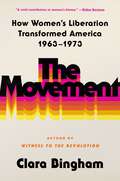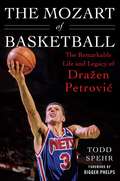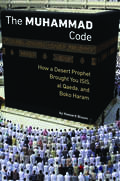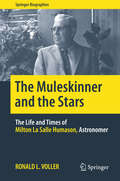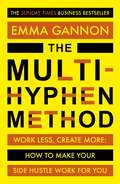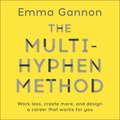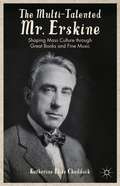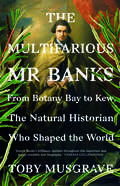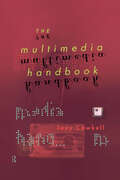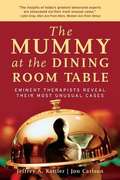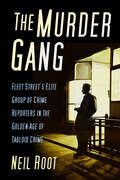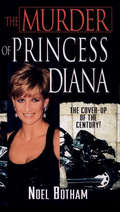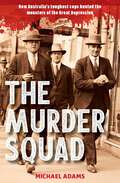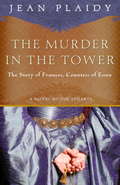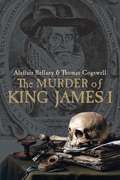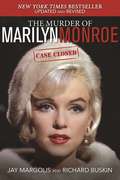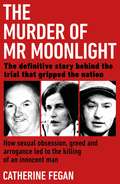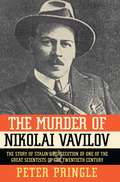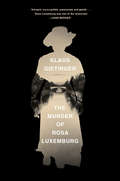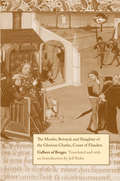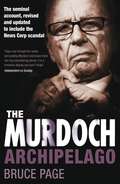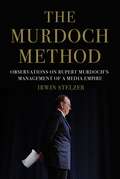- Table View
- List View
The Movement: How Women's Liberation Transformed America 1963-1973
by Clara BinghamA comprehensive and engaging oral history of the decade that defined the feminist movement, including interviews with living icons and unsung heroes—from former Newsweek reporter and author of the &“powerful and moving&” (The New York Times) Witness to the Revolution.For lovers of both Barbie and Gloria Steinem, The Movement is the first oral history of the decade that built the modern feminist movement. Through the captivating individual voices of the people who lived it, The Movement tells the intimate inside story of what it felt like to be at the forefront of the modern feminist crusade, when women rejected thousands of years of custom and demanded the freedom to be who they wanted and needed to be. This engaging history traces women&’s awakening, organizing, and agitating between the years of 1963 and 1973, when a decentralized collection of people and events coalesced to create a spontaneous combustion. From Betty Friedan&’s The Feminine Mystique, to the underground abortion network the Janes, to Shirley Chisholm&’s presidential campaign and Billie Jean King&’s 1973 battle of the sexes, Bingham artfully weaves together the fragments of that explosion person by person, bringing to life the emotions of this personal, cultural, and political revolution. Artists and politicians, athletes and lawyers, Black and white, The Movement brings readers into the rooms where these women insisted on being treated as first class citizens, and in the process, changed the fabric of American life.
The Mozart of Basketball: The Remarkable Life and Legacy of Dra?en Petrovic
by Digger Phelps Todd SpehrDražen Petrovic was born on October 22, 1964, in Šibenik, Croatia. Learning basketball at an early age from his older brother, Aleksandar, Dražen was a natural. He began his professional career at the age of fifteen, playing for the national team, where he began his rise through the European circuit. Known as a skilled shooter, it was not unusual for him to score 40, 50, even 60 points during a single game. While playing for Yugoslavia in the Olympics, Dražen and his team finished with the bronze medal in the 1984 Summer Olympic Games and the silver in the ’88 Games. He later won silver in the ’92 Olympics while playing for Croatia.In 1986, Dražen was drafted in the third round (60th overall) by the NBA’s Portland Trail Blazers. Deciding to play a few more years in Europe, he did not come to the US until the beginning of the 1989-1990 season. Dražen, along with a handful of other players, were part of the first groups of Europeans to break into the NBA, paving the way for future stars.After struggling with playing time in Portland, Dražen was traded to the New Jersey Nets in 1991. He would become a premier player and was considered one of the finest shooters in the NBA, averaging over 20 points a game in his two full seasons with the Nets. He was both a hero in the US as well as at home in Croatia, where his success had become a beacon of hope for his beleaguered countrymen who were enduring war in what is now the former Yugoslavia.In the summer of 1993, after his best season in the NBA, Dražen traveled to Poland to help his country qualify for the upcoming FIBA European Basketball Championship. Deciding against flying with his team back to Croatia, he instead chose to drive there with his girlfriend. On June 7, 1993, only a few months before his twenty-ninth birthday, Dražen Petrovic died in a traffic collision in Denkendorf, Germany. Thousands attended the funeral in his hometown, and the New Jersey Nets retired his number 3. Even though his career was cut short, his passion, determination, and spirit continue to influence not only his home country, but international basketball as a whole.Skyhorse Publishing, along with our Arcade, Good Books, Sports Publishing, and Yucca imprints, is proud to publish a broad range of biographies, autobiographies, and memoirs. Our list includes biographies on well-known historical figures like Benjamin Franklin, Nelson Mandela, and Alexander Graham Bell, as well as villains from history, such as Heinrich Himmler, John Wayne Gacy, and O. J. Simpson. We have also published survivor stories of World War II, memoirs about overcoming adversity, first-hand tales of adventure, and much more. While not every title we publish becomes a New York Times bestseller or a national bestseller, we are committed to books on subjects that are sometimes overlooked and to authors whose work might not otherwise find a home.
The Muhammad Code: How a Desert Prophet Brought You ISIS, al Qaeda, and Boko Haram
by Howard Bloom"If Howard Bloom is only ten percent right, we'll have to drastically revise our notions of the universe through the contagious joy of a great mind set loose on the biggest intellectual puzzles humans have ever faced. Whether you're a scientist or hyper-curious layperson, Bloom's argument will rock your world." -- Barbara Ehrenreich on Howard Bloom's The God ProblemOsama bin Laden called Mohammad "a Prophet of Conquest." Pakistan's Universal Sunnah Foundation brags that under Mohammad's battlefield leadership, "Islam spread an average of 317 square miles per day."Right now ISIS, al Qaeda, Boko Haram, and the Supreme Leader of Iran know that Islam toppled two of the biggest superpowers in history--Rome and Persia--then took over two-thirds of the inhabited world. Militant Muslims believe that Islam is on the brink of doing it again. The Muhammad Code: How a Desert Prophet Brought You ISIS, al Qaeda, and Boko Haram lays bare the origins of this profoundly dangerous belief.Many contemporary thinkers excuse Islamic violence as a legitimate reaction to Western imperialism. They blame America's wars in Iraq and Afghanistan and the establishment of Israel in 1948. But Jihad was invented in 624 AD by the only prophet ever to call himself "The Prophet of War." And that prophet was not responding to "legitimate grievances," but an ambition for world conquest.
The Muleskinner and the Stars
by Ronald L. VollerThis is the story of the astronomer Milton La Salle Humason, whose career was integral to developing our understanding of stellar and universal evolution and who helped to build the analytical basis for the work of such notable astronomers and astrophysicists as Paul Merrill, Walter Adams, Alfred Joy, Frederick Seares, Fritz Zwicky, Walter Baade and Edwin Hubble. Humason's unlikely story began on the shores of the Mississippi River in Winona, Minnesota, in 1891 and led to the foot of Mount Wilson outside Los Angeles, California, twelve years later. It is there where he first attended summer camp in 1903 and was captivated by its surroundings. The mountain would become the backdrop for his life and career over the next six decades as he helped first build George Ellery Hale's observatory on the summit and then rose to become one of that institution's leading figures through the first half of the twentieth century. The story chronicles Humason's life on Mount Wilson, from his first trip to the mountain to his days as a muleskinner, leading teams of mules hauling supplies to the summit during the construction of the observatory, and follows him through his extraordinary career in spectroscopy, working beside Edwin Hubble as the two helped to reconstruct our concept of the universe. A patient, knowledgeable and persistent observer, Humason was later awarded an honorary doctorate for his work, despite having no formal education beyond the eighth grade. His skill at the telescope is legendary. During his career he photographed the spectra of stars, galaxies and other objects many thousands of times fainter than can be seen with the naked eye and pushed the boundary of the known universe deeper into space than any before him. His work, which included assisting in the formulation of Hubble's Law of redshifts, helped to set the field of cosmology solidly on its foundation. Milton Humason was one of the most charismatic characters in science during the first half of the 20th century. Uneducated, streetwise, moonshining, roguish, humble and thoroughly down to earth, he rose by sheer chance, innate ability and incredible will to become the leading deep space observer of his day. "The Renaissance man of Mount Wilson," as Harlow Shapley once referred to him, Humason's extraordinary life reminds us that passion and purpose may find us at any moment.
The Multi-Hyphen Method: The Sunday Times business bestseller
by Emma GannonFor fans of Gretchen Rubin's Four Tendencies, Tim Ferris's 4-Hour Work Week and the author and entrepreneur Gary Vaynerchuk'It was a pleasure to read... the way we all work is going to change in the coming years' Richard BransonThe world of work is changing - so how do you keep up?You have the ability to make money on our own terms, when and where you want - but where do you start?If you've been itching to convert your craft into a career, or your side-hustle into a start up, then The Multi-Hyphen Method is for you.In The Multi-Hyphen Method award-winning blogger / social media editor / podcast creator, Emma Gannon, teaches that it doesn't matter if you're a part-time PA with a blog, or a nurse who runs an online store in the evenings - whatever your ratio, whatever your mixture, we can all channel our own entrepreneurial spirit to live more fulfilled and financially healthy lives.The internet and our phones mean we can work wherever, whenever and allows us to design our own working lives. Forget the outdated stigma of being a jack of all trades, because having many strings to your bow is essential to get ahead in the modern working world. We all have the skills necessary to work less and create more, and The Multi-Hyphen Method is the source of inspiration you need to help you navigate your way towards your own definition of success.
The Multi-Hyphen Method: The Sunday Times business bestseller
by Emma GannonThe Multi-Hyphen Method is an essential new business book for the digital age.The internet and our phones mean we can work wherever, whenever and allow us to design our own working lives. In The Multi-Hyphen Method Emma Gannon teaches that it doesn't matter if you're a part-time PA with a blog, or a physio who runs an online jewellery store in the evenings - whatever your ratio, whatever your mixture, we can all channel the entrepreneurial spirit. Today, the stigma of being a jack of all trades is being dispelled and having more strings to your bow is essential to getting ahead in the modern working world and Emma Gannon's book is the ultimate guide in helping us navigate our way towards success.(P)2018 Hodder & Stoughton Limited
The Multi-Talented Mr.Erskine
by Katherine Elise ChaddockThis first biography of John Erskine views him in the larger contexts of the mass culture and expanded commercialism that helped propel his fame. It also relates a life narrative that demonstrates perils of academic celebrity along a conceptual path from public intellectual to pop icon.
The Multifarious Mr. Banks: From Botany Bay to Kew, The Natural Historian Who Shaped the World
by Toby MusgraveA fascinating life of Sir Joseph Banks which restores him to his proper place in history as a leading scientific figure of the English Enlightenment As official botanist on James Cook's first circumnavigation, the longest-serving president of the Royal Society, advisor to King George III, the "father of Australia," and the man who established Kew as the world's leading botanical garden, Sir Joseph Banks was integral to the English Enlightenment. Yet he has not received the recognition that his multifarious achievements deserve. In this engaging account, Toby Musgrave reveals the true extent of Banks’s contributions to science and Britain. From an early age Banks pursued his passion for natural history through study and extensive travel, most famously on the HMS Endeavour. He went on to become a pivotal figure in the advancement of British scientific, economic, and colonial interests. With his enquiring, enterprising mind and extensive network of correspondents, Banks’s reputation and influence were global. Drawing widely on Banks's writings, Musgrave sheds light on Banks’s profound impact on British science and empire in an age of rapid advancement.
The Multimedia Handbook
by Tony CawkellThe Multimedia Handbook provides a comprehensive guide to the wide range of uses of multimedia. The first part of the book introduces the technology for the non-specialist. Part Two covers multimedia applications and markets. Tony Cawkell details the huge array of authoring software which is now available, as well as the distribution of multimedia data by telephone, cable, satellite or radio communications. There is an extensive bibliography, a glossary of technical terms and acronyms and a full index.
The Mummy at the Dining Room Table: Eminent Therapists Reveal Their Most Unusual Cases and What They Teach Us About Human Behavior
by Jeffrey A. Kottler Jon CarlsonThese and other fascinating and revealing stories are told by some of the most famous therapists in the world. Collected in this extraordinary book, well known practitioners recount the most memorable case histories of their illustrious careers. Engaging and surprising stories of human behavior are dramatically and often humorously portrayed. Each chapter gives a behind-the-scenes look at how therapists work with clients whose problems and behaviors aren't found in standard psychology textbooks. The book also shows how these eminent therapists often cure these apparently intractable problems and learn something about themselves in the process.
The Mural at the Waverly Inn: A Portrait of Greenwich Village Bohemians
by Dorothy Gallagher Edward SorelSorel--whose caricatures and drawings regularly appear in The New Yorker and on its cover--chose forty Greenwich Village greats from the past 150 years to cavort in bacchanalian splendor. Each of the 40 makes a solo appearance in these pages alongside a charming, telling vignette of his or her life by Dorothy Gallagher, then appears in a foldout of the entire mural at the back of the book.
The Murder Gang: Fleet Street’s Elite Group of Crime Reporters in the Golden Age of Tabloid Crime
by Neil RootThey were an elite group of renegade Fleet Street crime reporters covering the most notorious British crime between the mid-1930s and the mid-1960s. It was an era in which murder dominated the front and inside pages of the newspapers – the ‘golden age’ of tabloid crime. Members of the Murder Gang knew one another well. They drank together in the same Fleet Street pubs, but they were also ruthlessly competitive in pursuit of the latest scoop. It was said that when the Daily Express covered a big murder story they would send four cars: one containing their reporters, the other three to block the road at crime scenes to stop other rivals getting through. As a matter of course, Murder Gang members listened in to police radios, held clandestine meetings with killers on the run, made huge payments to murderers and their families – and jammed potatoes into their rivals’ exhaust pipes so their cars wouldn’t start. These were just the tools of the trade; it was a far cry from modern reporting. Here, Neil Root delves into their world, examining some of the biggest crime stories of the era and the men who wrote them. In turns fascinating, shocking and comical, this tale of true crime, media and social history will have you turning the pages as if they were those newspapers of old.
The Murder Of Princess Diana
by Noel BothamAugust 31, 1997 Millions remember the tragic date when the world lost a princess and two boys lost their beloved mother. It was a freak accident--Diana, Dodi Fayed, and driver Henri Paul died fleeing aggressive paparazzi. . . or so officials led us to believe. But investigative journalist Noel Botham wasn't satisfied with the "official" story. The Murder of Princess Diana documents his intensive probe into what happened that fateful night in Paris. Finally, here is a book that dares to ask--and answer--questions such as:Was the blood sample supposedly taken from Henri Paul's body actually his blood?Why was the tunnel cleaned with detergent before forensic investigations could take place?Why was Diana's body partially embalmed before the post mortem?What were the connections between the driver of the Fiat Uno seen near the Mercedes and MI6? Was the man's subsequent fiery death really an accident?Did Diana's international campaign against landmines create a deadly conflict with the CIA? Culled from interviews with contacts from behind palace walls to within the halls of the Pentagon, this shocking expose blows the lid off cover-ups arranged in the highest echelons of power. Now, at long last, the secrets are revealed; the lies are exposed--and the truth about Diana's death is brought to light. Noel Botham has been a senior investigative reporter for News of the World and The People. During his thirty-five years as an internationally renowned journalist, he has been on numerous royal tours and has broken many major royal exclusives. He has been a crime and Parliamentary reporter as well as a distinguished war correspondent, covering conflicts in the Middle East, North Africa, Southeast Asia, Eastern Europe, and the Caribbean. He worked for the Evening Star and the Daily Herald and was chief investigative reporter for France Dimanche in Paris before becoming chief reporter of the Daily Sketch. His fifteen previous books include biographies of Rudolf Valentino and Princess Margaret.
The Murder Squad: How Australia's toughest cops hunted the monsters of the Great Depression
by Michael AdamsAs Australia sank into the darkest days of the Great Depression, a succession of bloody mysteries grabbed headlines and gripped the country. The Hammer Horror, The Bungendore Bones, The Park Demon, The Human Glove and The Pyjama Girl - these were just some of the grisly cases that had to be solved by the Sydney detectives of The Murder Squad.With the people, press and politicians screaming for justice and vengeance, homicide chief Tom McRae and his colleagues used bold new investigative tools in the massive manhunts for these maniacal killers. Working under intense pressure, hard-nosed and hard-charging cops solved some cases brilliantly - yet others were 'closed' with dodgy convictions while several shadowy figures were to get away with murder.Set against the backdrop of our greatest economic crisis, as the federal and state governments headed for a showdown and fascist and communist thugs threatened civil war, The Murder Squad reopens the files on Australia's most chilling forgotten crimes to ask who was guilty, who was innocent, and whether some cops were as dangerous as the monsters they were hunting.
The Murder Squad: How Australia's toughest cops hunted the monsters of the Great Depression
by Michael AdamsAs Australia sank into the darkest days of the Great Depression, a succession of bloody mysteries grabbed headlines and gripped the country. The Hammer Horror, The Bungendore Bones, The Park Demon, The Human Glove and The Pyjama Girl - these were just some of the grisly cases that had to be solved by the Sydney detectives of The Murder Squad.With the people, press and politicians screaming for justice and vengeance, homicide chief Tom McRae and his colleagues used bold new investigative tools in the massive manhunts for these maniacal killers. Working under intense pressure, hard-nosed and hard-charging cops solved some cases brilliantly - yet others were 'closed' with dodgy convictions while several shadowy figures were to get away with murder.Set against the backdrop of our greatest economic crisis, as the federal and state governments headed for a showdown and fascist and communist thugs threatened civil war, The Murder Squad reopens the files on Australia's most chilling forgotten crimes to ask who was guilty, who was innocent, and whether some cops were as dangerous as the monsters they were hunting.
The Murder in the Tower: The Story of Frances, Countess of Essex (Stuart Saga #1)
by Jean PlaidyThe dashing Robert Carr is a well-known favorite of King James I. After attracting his attention by falling from a horse in the tiltyard, Robert rises quickly through the ranks. But when the cunning and beautiful Frances Howard comes to court, a very dangerous liaison changes everything. Married against her will while still a child, Frances emerges from that experience a headstrong force of nature--determined to have her own way, no matter what the consequences. Her attempts to rid herself of an unwanted husband, and later to ensnare a lukewarm lover, have led her deep into the world of spell-makers and poisoners. This is a woman to underestimate at great peril. But not until Robert finds himself ensnared in one of Frances's plots--imprisoned in the Tower of London and accused of murder--does he learn at last what she is truly capable of.
The Murder of King James I
by Alastair Bellany Thomas CogswellA year after the death of James I in 1625, a sensational pamphlet accused the Duke of Buckingham of murdering the king. It was an allegation that would haunt English politics for nearly forty years. In this exhaustively researched new book, two leading scholars of the era, Alastair Bellany and Thomas Cogswell, uncover the untold story of how a secret history of courtly poisoning shaped and reflected the political conflicts that would eventually plunge the British Isles into civil war and revolution. Illuminating many hitherto obscure aspects of early modern political culture, this eagerly anticipated work is both a fascinating story of political intrigue and a major exploration of the forces that destroyed the Stuart monarchy.
The Murder of Marilyn Monroe: Case Closed
by Richard Buskin Jay MargolisA New York Times Best Seller!Since Marilyn Monroe died among suspicious circumstances on the night of August 4, 1962, there have been queries and theories, allegations and investigations, but no definitive evidence about precisely what happened and who was involved . . . until now. In The Murder of Marilyn Monroe: Case Closed, renowned MM expert Jay Margolis and New York Times bestselling author Richard Buskin finally lay to rest more than fifty years of wild speculation and misguided assertions by actually naming, for the first time, the screen goddess’s killer while utilizing the testimony of eye-witnesses to exactly what took place inside her house on Fifth Helena Drive in Los Angeles’ Brentwood neighborhood.Implicating Bobby Kennedy in the commission of Marilyn’s murder, this is the first book to name the LAPD officers who accompanied the US Attorney General to her home, provide details about how the Kennedys used bribes to silence one of the ambulance drivers, and specify how the subsequent cover-up was aided by a noted pathologist’s outrageous lies. This blockbuster volume blows the lid off the world’s most notorious and talked-about celebrity death, and in the process exposes not only the truth about an iconic star’s tragic final hours, but also how a legendary American politician used powerful resources to protect what many still perceive as his untarnished reputation.Skyhorse Publishing, as well as our Arcade imprint, are proud to publish a broad range of books for readers interested in history--books about World War II, the Third Reich, Hitler and his henchmen, the JFK assassination, conspiracies, the American Civil War, the American Revolution, gladiators, Vikings, ancient Rome, medieval times, the old West, and much more. While not every title we publish becomes a national bestseller, we are committed to books on subjects that are sometimes overlooked and to authors whose work might not otherwise find a home.
The Murder of Mr Moonlight: The tragic story of a young widow’s search for happiness and the killing of an innocent man
by Catherine FeganTHE NUMBER ONE BESTSELLER 'I was a very vulnerable young woman with three small children. I was lost ... Pat Quirke tried to come in and control everything'Bobby Ryan's disappearance in rural Tipperary in June 2011 mystified all who knew him. The truck-driver and part-time DJ (known as Mr Moonlight) was an easy-going fellow with no enemies. Or so everyone thought.When Ryan's body was found 22 months later on the farm of Mary Lowry, the wealthy young widow he had been seeing, it was clear that he had met a violent end.And the most likely person to have brought about that end? Pat Quirke, the man who had 'discovered' the body - Mary Lowry's brother-in-law, financial advisor, tenant and one-time lover.Following the longest running murder trial in Irish criminal history Quirke was convicted of murder in May 2019. Getting to that day had taken years of exhaustive work by gardaí. The Murder of Mr Moonlight is the definitive account of their investigation as well as the compelling story of how an innocent man paid the price for another man's obsessions.__________'Absolutely compulsive reading ... a page-turner' Eamon Dunphy'[An] excellent book that shows all the colours of the story that intrigued the nation' Irish Daily Mail 'Well-researched and highly readable ... Fegan proves her journalistic mettle, delivering forensic detail in accessible language ... Anyone who followed the trial will not be disappointed by Fegan's book' Business Post
The Murder of Nikolai Vavilov
by Peter PringleIn The Murder of Nikolai Vavilov, acclaimed journalist and author Peter Pringle recreates the extraordinary life and tragic end of one of the great scientists of the twentieth century. In a drama of love, revolution, and war that rivals Pasternak's Dr. Zhivago, Pringle tells the story of a young Russian scientist, Nikolai Vavilov, who had a dream of ending hunger and famine in the world. Vavilov's plan would use the emerging science of genetics to breed super plants that could grow anywhere, in any climate, in sandy deserts and freezing tundra, in drought and flood. He would launch botanical expeditions to find these vanishing genes, overlooked by early farmers ignorant of Mendel's laws of heredity. He called it a "mission for all humanity." To the leaders of the young Soviet state, Vavilov's dream fitted perfectly into their larger scheme for a socialist utopia. Lenin supported the adventurous Vavilov, a handsome and seductive young professor, as he became an Indiana Jones, hunting lost botanical treasures on five continents. In a former tsarist palace in what is now St. Petersburg, Vavilov built the world's first seed bank, a quarter of a million specimens, a magnificent living museum of plant diversity that was the envy of scientists everywhere and remains so today. But when Lenin died in 1924 and Stalin took over, Vavilov's dream turned into a nightmare. This son of science was from a bourgeois background, the class of society most despised and distrusted by the Bolsheviks. The new cadres of comrade scientists taunted and insulted him, and Stalin's dreaded secret police built up false charges of sabotage and espionage. Stalin's collectivization of farmland caused chaos in Soviet food production, and millions died in widespread famine. Vavilov's master plan for improving Soviet crops was designed to work over decades, not a few years, and he could not meet Stalin's impossible demands for immediate results. In Stalin's Terror of the 1930s, Russian geneticists were systematically repressed in favor of the peasant horticulturalist Trofim Lysenko, with his fraudulent claims and speculative theories. Vavilov was the most famous victim of this purge, which set back Russian biology by a generation and caused the country untold harm. He was sentenced to death, but unlike Galileo, he refused to recant his beliefs and, in the most cruel twist, this humanitarian pioneer scientist was starved to death in the gulag. Pringle uses newly opened Soviet archives, including Vavilov's secret police file, official correspondence, vivid expedition reports, previously unpublished family letters and diaries, and the reminiscences of eyewitnesses to bring us this intensely human story of a brilliant life cut short by anti-science demagogues, ideology, censorship, and political expedience.
The Murder of Rosa Luxemburg
by Klaus GietingerOn the tracks of the killers of Rosa LuxemburgThe cold-blooded murder of revolutionary icons Rosa Luxemburg and Karl Liebknecht in the pitched political battles of post-WWI Germany marks one of the greatest tragedies of the 20th century. No other political assassination inflamed popular passions and transformed Germany's political climate as that killing in the night of 15-16 January 1919 in front of the luxurious Hotel Eden. It not only cut short the lives of two of the country's most brilliant political leaders, but also inaugurated a series of further political assassinations designed to snuff out the revolutionary flame and, ultimately, pave the way for the ultra-reactionary forces that would take power in 1933. To commemorate the 100th anniversary of their untimely deaths, Klaus Gietinger has carefully reconstructed the events on that fateful night, digging deep into the archives to identify who exactly was responsible for the murder, and what forces in high-placed positions had a hand in facilitating it and protecting the culprits.
The Murder of Sonny Liston: Las Vegas, Heroin, and Heavyweights
by Shaun AssaelOn January 5, 1971, Sonny Liston was found dead in his home--of an apparent heroin overdose. But no one close to Liston believed that his death was accidental. Digging deep into a life that Liston tried hard to hide, investigative journalist Shaun Assael treats the boxer's death as a cold case. The result is a page-turning whodunit that evokes a glorious and grimy era of Las Vegas. Elvis Presley was playing two shows a night at the International. Howard Hughes was running his empire from the penthouse suite of the Desert Inn. And middle America was flocking to the Strip, transforming it from an exclusive playground for the mob to a mecca for corporate dollars. But the city was also rotting from within. Heroin was pouring over the border from Mexico, and the segregated Westside was on the cusp of a race war. The cops, brutally violent, were barely holding it together. Driving through town with the top of his pink Cadillac down, Sonny Liston was the one celebrity who was unafraid to bridge the two sides of Las Vegas. Cashing in on his fading notoriety in the casinos, he was dealing drugs, working for a crime syndicate, and trying to break into Hollywood--all with a boxer's faith that he could duck any threat, slip any punch. Heroin addiction was the only knockout blow he didn't see coming. The Murder of Sonny Liston takes a fresh look at the legendary boxer, the town he called home, and one of America's most enduring mysteries.From the Hardcover edition.
The Murder, Betrayal, and Slaughter of the Glorious Charles, Count of Flanders
by John Jeffrey Rider Galbert Of BrugesIn 1127 Charles the Good, count of Flanders, was surrounded by assassins while at prayer and killed by a sword blow to the forehead. His murder upset the fragile balance of power between England, France, and the Holy Roman Empire, giving rise to a bloody civil war while impacting the commercial life of medieval Europe. The eyewitness account by the Flemish cleric Galbert of Bruges of the assassination and the struggle for power that ensued is the only journal to have survived from twelfth century Europe. This new translation by medieval studies expert Jeff Rider greatly improves upon all previous versions, substantially advancing scholarship on the Middle Ages while granting new life and immediacy to Galbert's well informed and courageously candid narrative.
The Murdoch Archipelago
by Bruce PageRupert Murdoch is one of the most powerful men in the world today. As chief executive of News Corporation, he controls a global media empire which boasts some of the major players in newspapers, television, publishing and the movie business. In the English-speaking world, and increasingly in 'untapped' but potentially lucrative markets such as China, he wields an influence as political kingmaker second to none. How did he do it? How did this empire, a loose 'archipelago' of media islands large and small, come to be so successful and influential? Building on many years' research and featuring many previously undisclosed revelations, THE MURDOCH ARCHIPELAGO is the most definitive survey yet of Murdoch's life and times; how power flows from influence; and whether this should (or if it can) be regulated.
The Murdoch Method: Observations On The Management Of A Media Empire
by Irwin StelzerFollowing Murdoch’s journey from a small-town newspaperman to a globe-dominating media mogul, a clear-eyed examination of Rupert Murdoch’s business philosophies and management techniques, from a key advisor of thirty-five years. After having worked closely with the legendary media titan for thirty-five years, Irwin Stelzer is uniquely positioned to evaluate Murdoch’s media empire through periods of rapid expansion and acquisitions, times of financial and regulatory stress, and political battles in Britain and America. Stelzer helped plan important company conclaves and assisted with Murdoch’s speeches, at least one of which was responsible for having News Corp barred by the Chinese regime from doing business in that country. Here are the philosophies on how Rupert approaches and values deals, whether stalking the Wall Street Journal for decades before pouncing, or “over-paying” for everything from Fox Studios to NFL rights; how he copes with regulatory constraints; how he wins some and loses some, must notably MySpace. The Murdoch Method is the sum total of the management techniques that grew out of Rupert’s attitudes and conceptions, taking him from a struggling newspaper in an out-of-the-way town in Australia to running a globe-dominating media enterprise.
